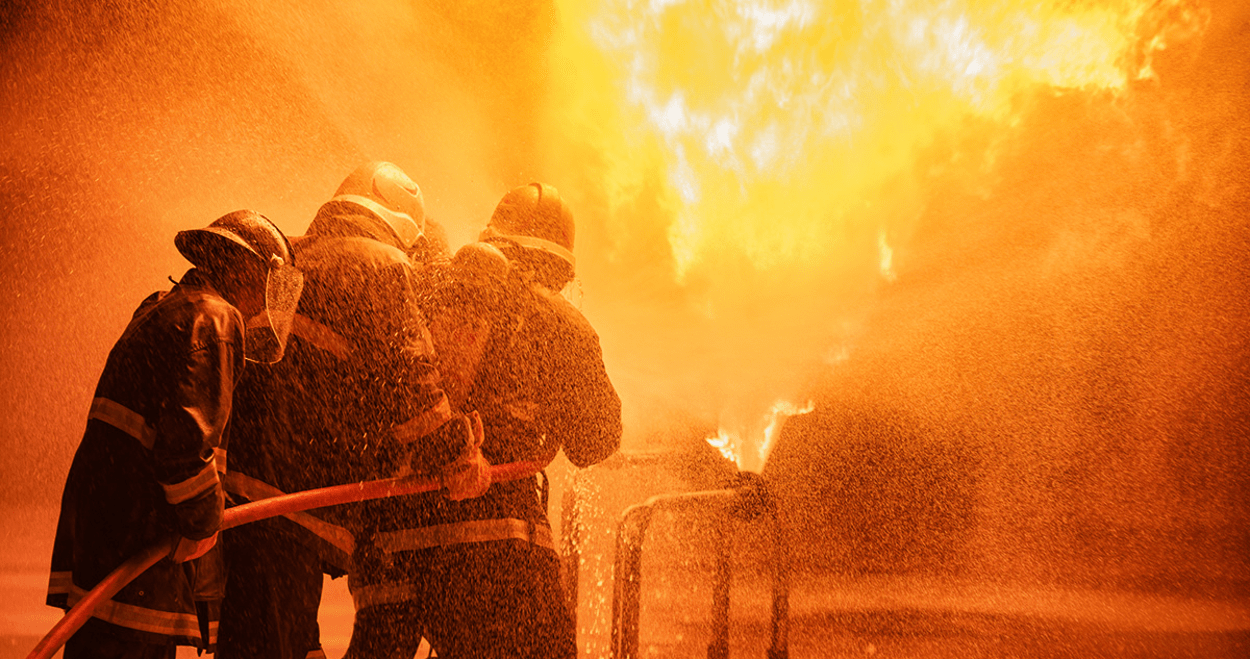NEWS
Women, climate change and health

Climate change has affected many people around the world, from Syria and Turkey to Bangladesh, the Maldives and Pakistan. The fight against recent floods has left much of Pakistan’s population in the balance.
In addition to economic losses, there are many other problems, and the main burden of most of them falls on the female population. The UN Environment estimates that about 80 percent of people displaced by climate change are women.

Climate change is causing the spread of diseases such as malaria, dengue fever, hepatitis, gastroenteritis and tuberculosis, which are transmitted by insects, humans and are exacerbated by poor access to clean food, water and health care. Women are at higher risk of contracting these diseases, especially due to the accumulation and stagnation of flood and rainwater, and the lack of sanitary and hygienic measures.
According to UNDP, women and children are 14 times more likely to die in weather-related natural disasters. The role of caregivers puts them at high risk not only of contracting the disease, but also of its further spread. This fact alone is incredibly alarming and may well become one of the main factors that dramatically change the overall picture of the health of the population.
Women are also more likely to be affected by extreme weather events such as floods, droughts and hurricanes, which are becoming more frequent and severe due to climate change. Women living in low-income countries and rural areas are particularly vulnerable as they often lack the resources and infrastructure to cope with the impact of these events. Women are more likely to be killed or injured during natural disasters because they are often responsible for caring for children and the elderly and may not be able to evacuate or seek shelter.
The main impact of climate change is the reduction in the availability and quality of food and water, which can have a significant impact on women’s health. Women and children in these conditions are 14 times more likely than men to die from severe storms, tornadoes and floods. In addition, they are at risk of violence, disease and death during such movements.
Women in many cultures, especially ours, are often in charge of collecting water and preparing food, which means they are more vulnerable to droughts and floods. In addition, climate change could lead to crop failures and reduced agricultural productivity, which could exacerbate food insecurity and malnutrition. Malnutrition is especially hard on women, as women in rural areas have more children than urban populations, and malnutrition is often the final blow to their already poor health.
Mothers of young children are also very susceptible to the consequences of food shortages and malnutrition due to lactation, which in turn affects children. Nearly 700,000 pregnant women in Pakistan lost their maternal health during the floods. In addition, malnutrition and illness during pregnancy and early life can lead to many developmental disorders such as spina bifida, kwashiorkor, marasmus, etc. In addition to anxiety and injury, girls during menstruation had no care for menstruation, and , an estimated 70 percent of women in flood-affected areas suffered urinary tract infections due to lack of access to toilets and due to wearing dirty cloths instead of clean towels.
Girls and women experience significantly more violence than boys and men. This is especially true for those who have been displaced or resettled, as women are vulnerable to various forms of exploitation such as domestic work, forced prostitution and even organ trafficking. Unfortunately, women face numerous barriers to seeking help, making it difficult for them to get out of such situations.
Climate change can also have significant impacts on mental health, with women being particularly vulnerable to this. Women may experience anxiety and depression in response to the trauma of extreme weather events or the loss of homes, livelihoods and communities. Women living in areas affected by climate change also experience social isolation, as they may be forced to migrate or adapt to new living conditions. They are also forced to accept jobs that expose them to a high risk of physical and mental stress. While it is understood that the spillover effect of climate change can have immediate results in the form of depression and anxiety, society often overlooks the lasting change it brings: post-traumatic stress disorder.
Once a person has experienced traumatic events such as extreme weather events, loss of homes and possessions, and displacement, life can never be the same again. People who experienced temperatures one degree Celsius higher were found to be 21 percent more likely to have an anxiety disorder. They were also 24 percent more likely to have depression and anxiety together. They find it difficult to adjust to a new life, even if they manage to rebuild their homes. The fear and feelings that accompanied the events of climate change remain with them throughout their lives, season after season.
Climate change refugees also face stigma and discrimination from their host communities, either due to the economic problems created by a population surge or due to legal status, which can exacerbate mental health problems. and make people live in a state of alienation and discrimination.
Overall, the physical and often ignored mental health impacts of climate change refugees are significant and require the attention of policymakers and mental health professionals. Addressing the mental health needs of climate change refugees will require a comprehensive approach that includes both individual and community interventions, as well as efforts to address the underlying causes of climate change and displacement.
Prioritizing women in politics is critical to empowering them and will help Pakistan meet SDG 5: gender equality alongside climate action.
NEWS
Unveiling the Mysteries of Henry Morley Sands: A Journey into the Heart of Literary Enchantment

Introduction to Henry Morley Sands
Henry Morley Sands, born in the quaint town of Willowbrook, captivated readers with his eloquent prose and captivating storytelling. His life, akin to a tapestry woven with threads of imagination and emotion, continues to intrigue scholars and enthusiasts alike.
Early Life and Education
Born into a family of scholars, Sands displayed a penchant for literature from an early age. His formative years were spent immersed in the classics, nurturing a love for storytelling and the written word.
Literary Beginnings: The Journey into Writing
Sands embarked on his literary journey with fervor, penning his thoughts and observations with a clarity that belied his years. His early works hinted at a prodigious talent destined for greatness.
Themes in Henry Morley Sands’ Works
Exploring the thematic tapestry of Sands’ oeuvre reveals recurring motifs that resonate with readers across generations. Themes of love, loss, nature’s beauty, and the quest for identity permeate his writings.
Love and Loss
Sands’ exploration of human emotions, particularly love and loss, strikes a chord with readers, evoking empathy and introspection.
Nature and its Significance
Nature serves as both backdrop and muse in Sands’ works, with vivid descriptions transporting readers to idyllic landscapes teeming with life and symbolism.
Identity and Self-Discovery
The quest for identity and self-discovery forms the crux of many of Sands’ narratives, as characters navigate the complexities of existence and forge their paths.
Style and Influence
Sands’ writing style, characterized by lyrical prose and poignant imagery, reflects a deep appreciation for language and its emotive power.
Literary Influences
Drawing inspiration from literary luminaries such as Wordsworth and Keats, Sands carved a niche for himself in the literary landscape, blending tradition with innovation.
Unique Writing Style
Sands’ distinctive voice and narrative flair set him apart, captivating readers with tales that linger in the mind long after the final page is turned.
Popular Works by Henry Morley Sands
Sands’ literary repertoire boasts an array of acclaimed works that continue to enchant readers worldwide.
“Echoes of Eternity”
A haunting exploration of love and loss set against the backdrop of a fading world, “Echoes of Eternity” resonates with readers for its raw emotion and timeless themes.
“Whispers in the Wind”
In “Whispers in the Wind,” Sands invites readers on a journey of self-discovery and redemption, weaving a tapestry of hope amidst despair.
“Shadows of Solitude”
“Shadows of Solitude” delves into the depths of the human psyche, exploring themes of isolation and longing with a poignancy that leaves a lasting impression.
Reception and Criticism
Sands’ works garnered both acclaim and scrutiny from literary critics, sparking debates on the nature of art and the human experience.
Legacy of Henry Morley Sands
Though Sands’ life was cut short, his legacy endures, inspiring future generations of writers and readers alike.
The Enigmatic Persona: Beyond the Pages
Beyond his literary achievements, Sands’ enigmatic persona continues to intrigue scholars, who seek to unravel the mysteries surrounding his life and work.
Exploring Literary Enchantment
Sands’ writings transcend time and space, captivating readers with their universal themes and timeless relevance.
Impact on Readers
Readers are drawn to Sands’ works for their ability to evoke profound emotions and provoke introspection.
Cultural Significance
Sands’ literary contributions have left an indelible mark on the cultural landscape, enriching society with stories that resonate across boundaries.
Unraveling the Mysteries
Scholars and enthusiasts alike continue to dissect Sands’ writings, seeking deeper insights into his creative process and philosophical musings.
Interpretations and Analysis
Various interpretations abound, shedding light on the multifaceted nature of Sands’ narratives and the layers of meaning they contain.
Scholarly Perspectives
Academics delve into Sands’ works with scholarly rigor, uncovering hidden nuances and contextualizing his contributions within the broader literary canon.
Continuing Influence: Contemporary Relevance
Sands’ influence extends beyond the confines of his time, inspiring contemporary writers to explore themes of love, loss, and existentialism with renewed vigor.
Immortalizing Henry Morley Sands
Through biographies, critical studies, and adaptations, Sands’ legacy lives on, ensuring that future generations will continue to be enthralled by his literary genius.
Conclusion
In unveiling the mysteries of Henry Morley Sands, we embark on a journey of discovery and enlightenment, guided by the enduring power of his words and the timeless enchantment they evoke.
FAQs
- Was Henry Morley Sands a real person?
- Yes, Henry Morley Sands was a real writer, whose works continue to captivate readers worldwide.
- What themes did Sands explore in his writings?
- Sands’ writings often explored themes of love, loss, nature, and the quest for identity.
- What is Sands’ most famous work?
- Sands’ most famous work is arguably “Echoes of Eternity,” known for its evocative prose and timeless themes.
- Did Sands receive critical acclaim during his lifetime?
- Yes, Sands’ works garnered both critical acclaim and scrutiny from literary critics.
- What is the legacy of Henry Morley Sands?
- Sands’ legacy lies in his enduring influence on literature and his ability to captivate readers with his timeless tales.
NEWS
NFT Drops Radar: Navigating the Digital Art Marketplace

NFT Drops Radar, In the rapidly evolving world of digital art and collectibles, Non-Fungible Tokens (NFTs) have emerged as a revolutionary concept, offering unique ownership of digital assets. NFT Drops, in particular, have become a focal point for artists, collectors, and investors alike. These drops are events where creators release their digital artworks or collectibles for sale. To navigate this dynamic landscape efficiently, platforms like NFT Radar have gained prominence.
Understanding NFT Drops Radar
NFT Drops Radar serves as a tool for enthusiasts and investors to track upcoming NFT drops and monitor market trends. Essentially, it acts as a radar, scanning the vast digital art marketplace to identify noteworthy releases and emerging trends. Through advanced algorithms and data analytics, NFT Radar provides valuable insights into the ever-expanding world of NFTs.
Exploring the NFT Drops Radar
Understanding NFT Drops
NFT Drops Radar refer to the release of new digital assets or collections in the form of Non-Fungible Tokens. These drops are often highly anticipated events within the NFT community, attracting attention from collectors and investors worldwide. From artwork and music to virtual real estate and gaming items, NFT drops encompass a wide range of digital assets, each with its unique characteristics and value propositions.
Importance of Monitoring NFT Drops
Monitoring NFT drops is essential for individuals looking to participate in the NFT market actively. By staying updated on upcoming drops, collectors can identify potential investment opportunities, discover new artists and projects, and engage with their favorite creators. Additionally, being aware of trending NFT drops allows enthusiasts to explore different genres and styles, expanding their NFT portfolios and enhancing their overall experience in the digital collectibles space.
Strategies for Tracking NFT Drops
To effectively track NFT drops, enthusiasts can utilize various tools and platforms specifically designed for this purpose. From dedicated NFT marketplaces to social media channels and Discord communities, there are numerous resources available to stay informed about upcoming releases. Additionally, subscribing to newsletters, following influential figures in the NFT space, and joining online forums can provide valuable insights into trending projects and emerging opportunities.
Leveraging Data Analytics
In recent years, data analytics has played an increasingly significant role in monitoring NFT drops and predicting market trends. Analytical tools and algorithms can assess historical data, market sentiment, and other relevant factors to identify patterns and forecast potential success for upcoming NFT releases. By leveraging data-driven insights, collectors and investors can make informed decisions and optimize their strategies in the competitive NFT market.
Benefits of Using NFT Drops Radar
The utilization of NFT Drops Radar offers several advantages to participants in the digital art ecosystem. Firstly, it facilitates the discovery of upcoming NFT drops, allowing users to stay ahead of the curve and participate in exclusive releases. Additionally, NFT Radar enables users to monitor trends and market demand, assisting both creators and investors in making informed decisions.
How to Access NFT Drops Radar
Platforms
Accessing NFT Drops Radar platforms is relatively straightforward, with various websites and applications available to users. Popular platforms such as OpenSea and Rarible offer comprehensive NFT Radar functionalities, allowing users to register and navigate the interface with ease. By creating an account and setting preferences, users can tailor their experience to suit their interests and investment goals.
Tips for Navigating NFT Drops Radar
Effectively
To maximize the benefits of NFT Drops Radar, users should adopt certain strategies for efficient navigation. This includes setting preferences and filters to customize the displayed content according to individual preferences. Furthermore, understanding project details and metrics is essential for making informed investment decisions and identifying potential opportunities.
Case Studies: Successful NFT Drops Tracked by NFT Radar
Several high-profile NFT Drops Radar have achieved considerable success with the assistance of NFT Radar platforms. For instance, the release of digital art collections by renowned artists like Beeple and Pak has garnered widespread attention within the NFT community. By analyzing the success factors of these drops, users can gain valuable insights into effective NFT marketing strategies.
Challenges and Risks Associated with NFT Drops Radar
Despite its benefits, NFT Drops Radar also presents certain challenges and risks. Scalability issues may arise due to the rapidly growing number of NFT projects, leading to performance issues and delays in data processing. Moreover, security concerns and scams pose a significant risk to users, highlighting the importance of due diligence and caution when participating in NFT drops.
Future Trends in NFT Drops and Radar Technology
Looking ahead, the future of NFT drops and radar technology appears promising, with continued innovation and integration with blockchain and AI. Advanced radar algorithms will enhance the detection of emerging trends and market dynamics, providing users with unparalleled insights and opportunities in the digital art marketplace.
Conclusion
In conclusion, NFT Drops Radar plays a pivotal role in navigating the dynamic landscape of NFT drops and digital art collectibles. By leveraging advanced algorithms and data analytics, users can discover upcoming releases, monitor market trends, and make informed investment decisions. As the digital art ecosystem continues to evolve, the importance of NFT Radar in facilitating efficient navigation and discovery cannot be overstated.
FAQs
- What exactly is NFT Radar? NFT Radar is a platform that tracks upcoming NFT drops and monitors market trends within the digital art marketplace.
- How can I access NFT Radar platforms? Users can access NFT Radar platforms through popular websites and applications such as OpenSea and Rarible.
- What are the benefits of using NFT Radar? Using NFT Radar allows users to discover upcoming NFT drops, monitor market trends, and make informed investment decisions.
- Are there any risks associated with NFT Radar? Yes, potential risks include scalability issues, security concerns, and scams within the digital art marketplace.
- What does the future hold for NFT drops and radar technology? The future of NFT drops and radar technology is promising, with continued innovation and integration with blockchain and AI.
NEWS
The Evolution and Importance of Modern Fire and EMT Training Programs

Firefighting and emergency medical response are pillar services that uphold community safety. These demanding fields require personnel who are physically capable and continually educated on the latest protocols and advancements in their areas. A cornerstone for such advancement in knowledge and skill is specialized training programs, like a highly-regarded Texas EMT course, that offer foundational and ongoing education. The depth and breadth of these courses reflect the evolution of fire and EMT services from their nascent stages to the sophisticated disciplines they are today. By exploring this progression and its impacts on community welfare, it becomes clear why modern training programs are indispensable to these lifesaving professions.
Key Takeaways
- Vital, ongoing training within the evolving fields of firefighting and emergency medical services ensures effective response capabilities.
- Historical advancements and present-day technologies have shaped the comprehensive training programs of today.
- Mental health awareness and support initiatives are as integral as physical and technical training for first responders.
Table of Contents
- The History Behind Firefighting and Emergency Medical Services
- Modern Firefighting: Techniques and Challenges
- Evolution of Emergency Medical Training
- The Science of Fire Behavior and Fire Control Measures
- Life on the Line: The Mental Health of Firefighters and EMTs
- The Interconnected Roles of Firefighters and EMTs
- The Continuous Education of Firefighters and EMTs
- Technology’s Impact on Fire and EMT Training
- Addressing the Need for Fire and EMT Services in Rural Communities
- Preparing the Next Generation: Youth Programs and Community Involvement
- The Global Exchange of Knowledge in Fire and EMT Training
The History Behind Firefighting and Emergency Medical Services
Firefighting has roots that stretch deep into history, evolving from bucket brigades to the complex operations we see today. Historically, communities relied on volunteer efforts, but as the recognition of fire hazards grew, so did the need for organized and professional firefighting forces. The development of structured fire brigades paved the way for modern firefighting tactics and training methodologies. Emergency medical services also made leaps and bounds, evolving from transporting the injured to hospitals to providing essential, on-the-spot, lifesaving treatments. To understand such progression, studying historical texts from authoritative sources like the National Fire Protection Association provides insight into the transformations that have shaped the current state of emergency services.
Modern Firefighting: Techniques and Challenges
The field of firefighting is now fraught with many modern hazards, including advanced construction materials and methods, rising urban densities, and a host of chemical and electrical fire causes. This necessitates specialized training programs encompassing fire suppression, hazardous-material management, rescue operations, and even medical first responders. Training drills simulate complex fire scenarios, arming firefighters with the skills necessary to affect positive outcomes in diverse emergencies. The constant evolution of fire hazards demands that training programs remain adaptive and forward-thinking.
Evolution of Emergency Medical Training
Emergency Medical Technicians are on the front lines, where medical crises unfold with urgency and unpredictability. The journey of an EMT begins with robust foundational training that imparts knowledge of medical principles and lifesaving skills. EMT programs then build upon this base with specialized courses that cover a wide range of emergency scenarios. As the medical field has grown, EMT training has kept pace, evolving from essential ambulance services to sophisticated procedures akin to those done in emergency rooms. Invaluable, scenario-based emergency simulations discussed in resources like EMS1 aim to hone the spontaneous reactions of EMTs to ensure their readiness for real-world challenges—leadership, critical thinking, and emotional fortitude being as essential as medical acumen.
The Science of Fire Behavior and Fire Control Measures
Understanding the intricate science of fire is necessary for modern firefighting. Training programs rigorously address the chemical processes of combustion, the dynamics of different fire fuels, and the thermal behavior associated with fires in open and enclosed spaces. With this knowledge, firefighters can predict how a fire might develop or spread and select appropriate control measures. This scientific approach is vital in safeguarding lives and minimizing property damage during fire incidents and forms the cornerstone of many advanced firefighting courses.
Life on the Line: The Mental Health of Firefighters and EMTs
Recent years have witnessed a commendable surge in addressing the mental well-being of emergency responders. The nature of their work exposes firefighters and EMTs to traumatic events, which can lead to stress disorders, depression, and anxiety. Comprehensive training now envelops mental resilience, with programs providing education on managing psychological trauma, peer support, and access to mental health professionals. Initiatives for mental health aim not only to care for those currently serving but also to fortify the resolve of the professionals as they enter into careers known for their high emotional demands.
The Interconnected Roles of Firefighters and EMTs
In the theater of emergency response, firefighters and EMTs often perform in a choreographed tandem. It is not uncommon for firefighters to provide medical care before EMTs arrive or for EMTs to support firefighting efforts. This interplay is nurtured within training programs that emphasize cross-functional skills and teamwork. The synergy between the two services amplifies their ability to save lives, highlighting the necessity for joint exercises and communication training in preparing effective emergency response teams.
The Continuous Education of Firefighters and EMTs
The perpetual evolution of natural and human-made environments dictates that the education of firefighters and EMTs can never be ‘complete.’ As new challenges surface and technologies emerge, ongoing training is imperative. Recertification courses, advanced training modules, and workshops introducing the latest industry practices are regularly integrated into the firefighter and EMT training agendas. Through continual education, these professionals remain at the forefront of safety and emergency medical care, equipped to tackle emerging public health and safety threats.
Technology’s Impact on Fire and EMT Training
With innovative technological strides, training programs have adopted state-of-the-art tools to create immersive learning experiences. Cutting-edge simulation technology, such as virtual reality (VR), allows firefighters and EMTs to engage in highly realistic emergency scenarios without any actual risk. These immersive environments are incredibly effective in skill acquisition, decision-making practice, and honing situational awareness – crucial attributes for real-life emergencies. They also standardize training outcomes by providing a uniform learning experience independent of geographical or physical constraints.
Addressing the Need for Fire and EMT Services in Rural Communities
Fire and EMT services in rural areas present unique challenges, notably fewer resources and greater distances between service providers and their communities. Specialized training programs have been developed to cater to these constraints, focusing on maximizing limited resources while ensuring adequate coverage. Initiatives like community volunteer response teams, telemedicine support for EMTs, and strategic positioning of firefighting resources help improve the readiness and capability of rural emergency services, ensuring that no community needs to go without adequate protection and emergency medical care.
Preparing the Next Generation: Youth Programs and Community Involvement
Future-proofing fire and EMT services means investing in the youth and fostering community engagement. Educational programs in schools and communities, such as cadet programs or fire safety workshops, are essential in sparking interest and grooming the next wave of professionals. Active engagement in these programs is instrumental in educating the public about fire safety and emergency medical knowledge, inspiring young individuals to pursue careers in these noble and necessary fields.
The Global Exchange of Knowledge in Fire and EMT Training
Just as emergencies know no borders, neither does the exchange of knowledge and strategies in handling them. Global forums for fire and EMT services facilitate an invaluable exchange, allowing insights and techniques from around the world to influence local practices. Lessons learned from international disasters, shared tactics in firefighting and emergency medical interventions, and cooperative training exercises enhance domestic capabilities and foster a worldwide sense of camaraderie among those who dedicate their lives to serving others.
-

 HEALTH2 years ago
HEALTH2 years agoDr. Naval Parikh: Thyroid Disease Signs, Symptoms & Treatment Options
-

 HEALTH2 years ago
HEALTH2 years agoDr. Naval Parikh: Back Injuries, Types, Causes, Symptoms and Treatment
-

 FASHION11 months ago
FASHION11 months agoBest Color Shoes for Men: Making a Style Statement
-

 TECH2 years ago
TECH2 years agoHow to Turn Flashlight On iPhone & Off, 3 Easy Ways
-

 Celebrity2 years ago
Celebrity2 years agoDay 3 of Spring 2016 New York Fashion Week’s most inspiring
-

 GAMES2 years ago
GAMES2 years agoAbout Tekken 3
-

 APPS2 years ago
APPS2 years agoY2mate download videos from YouTube Facebook etc
-

 HEALTH8 months ago
HEALTH8 months agoTop 5 Best Activities For Well being
